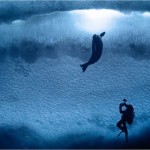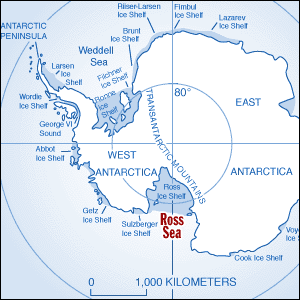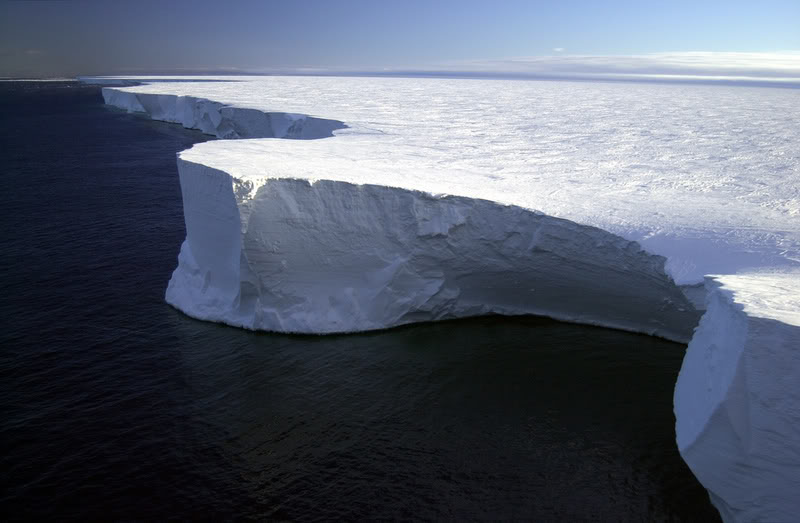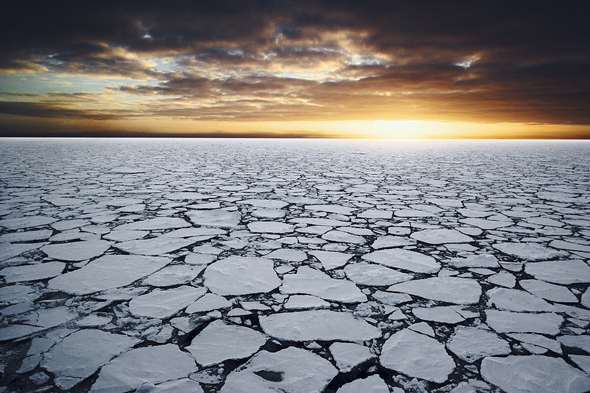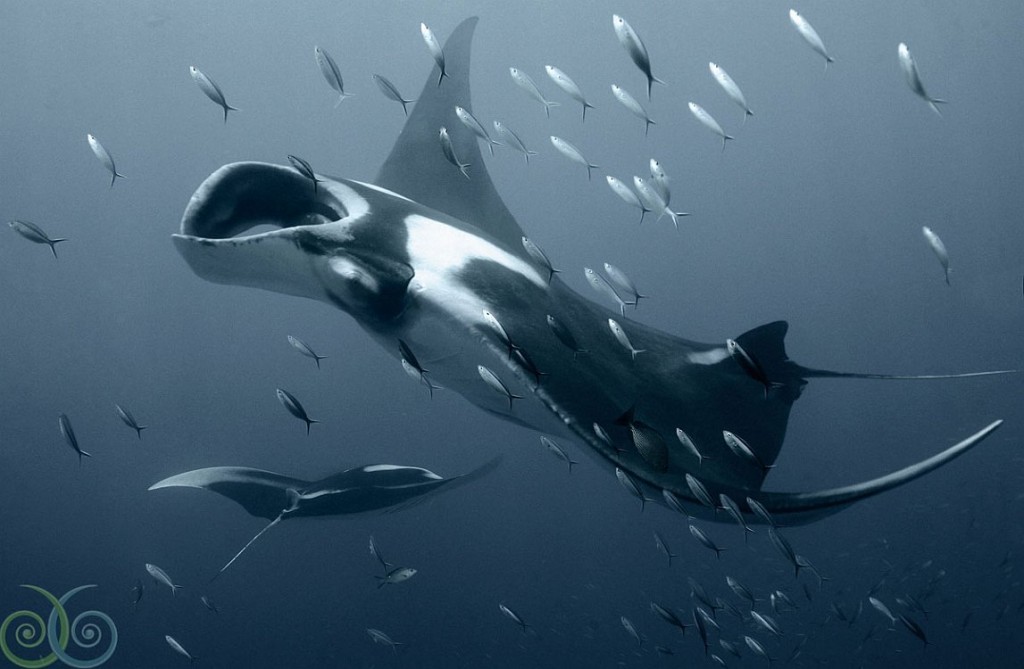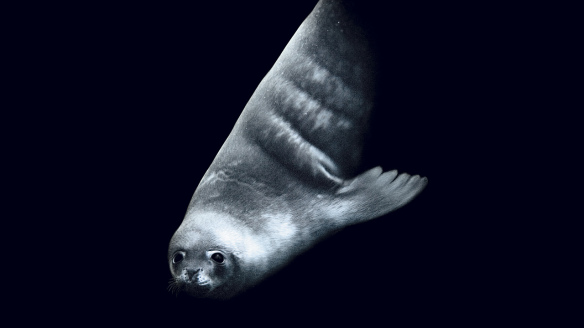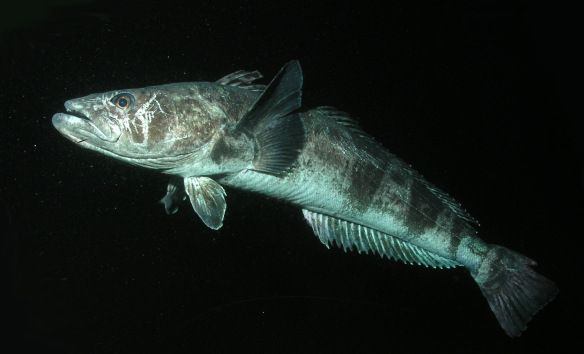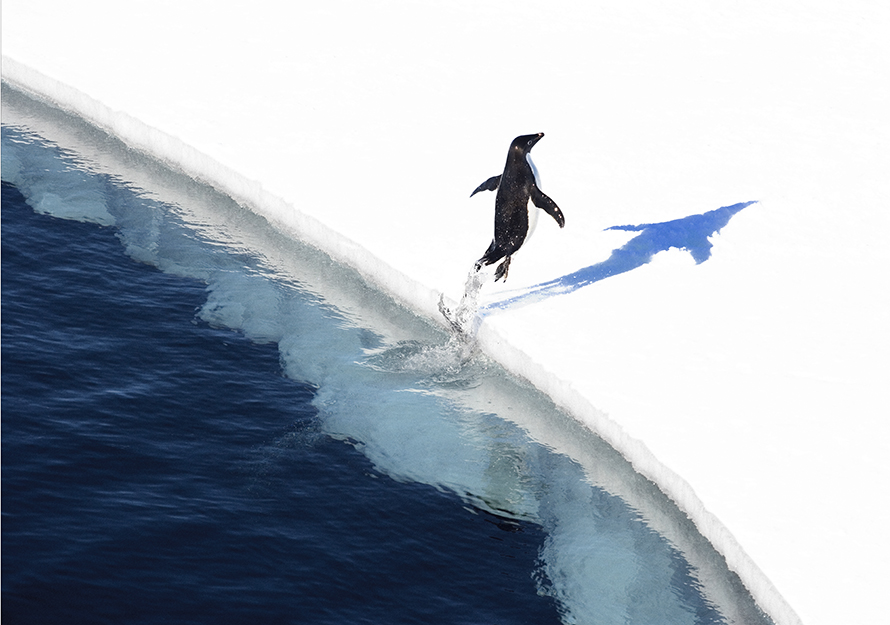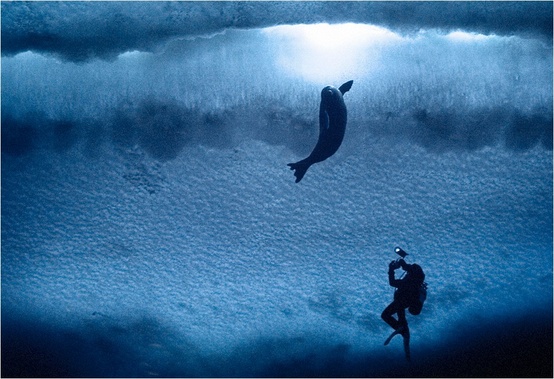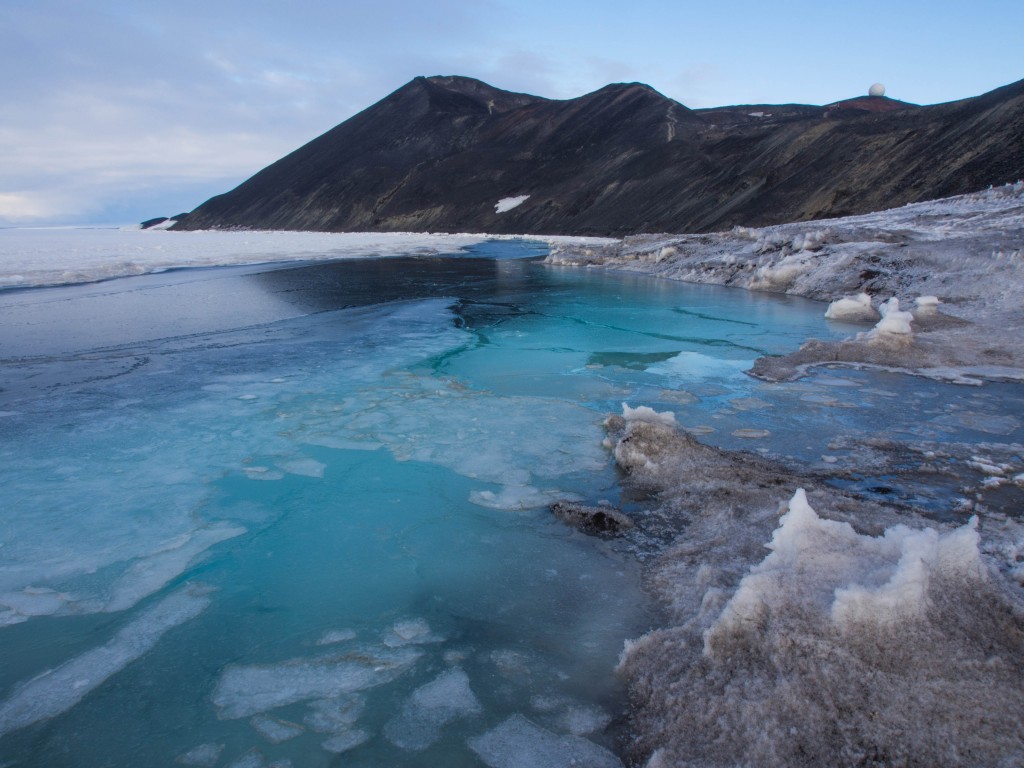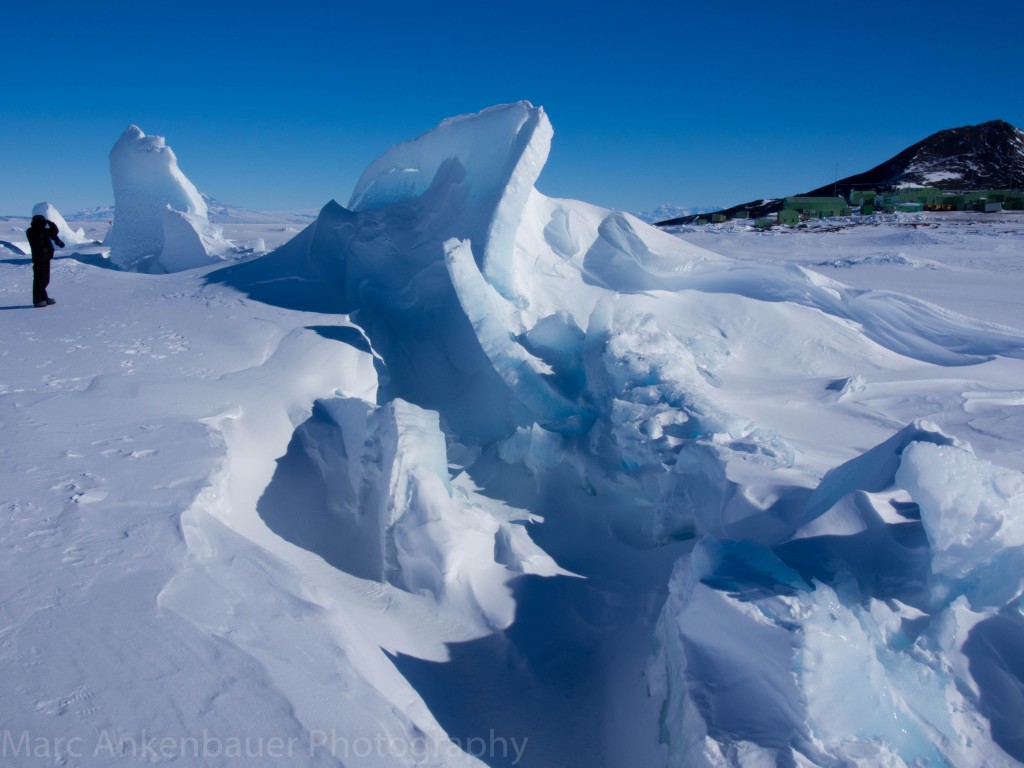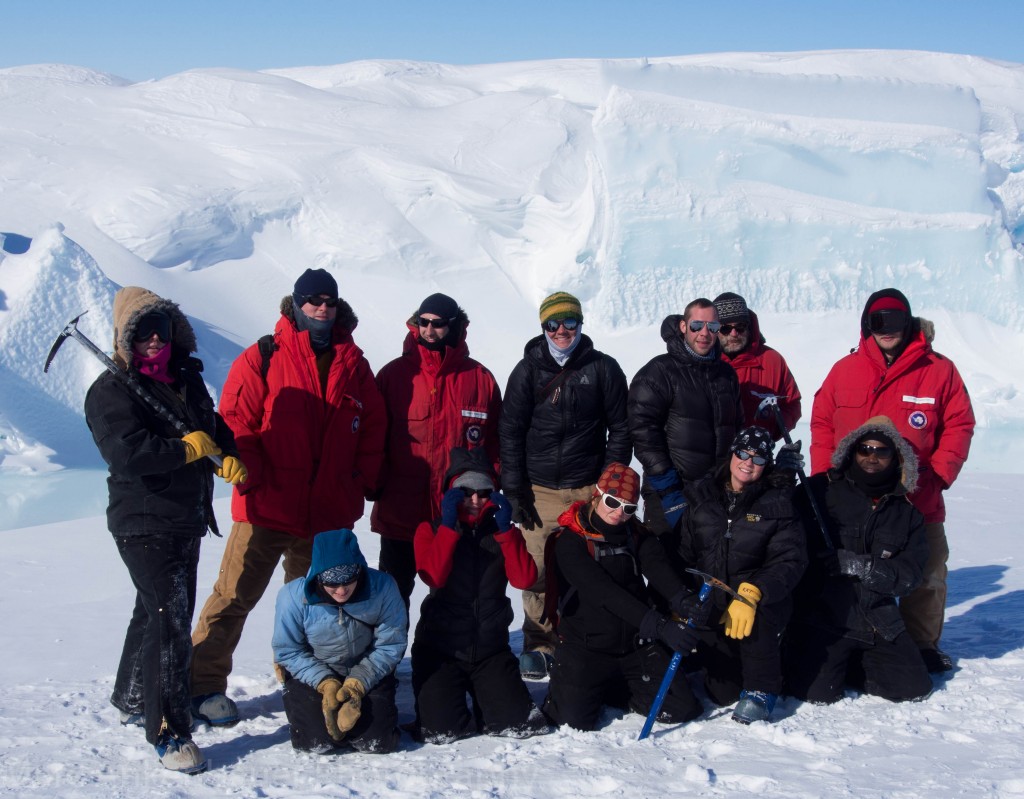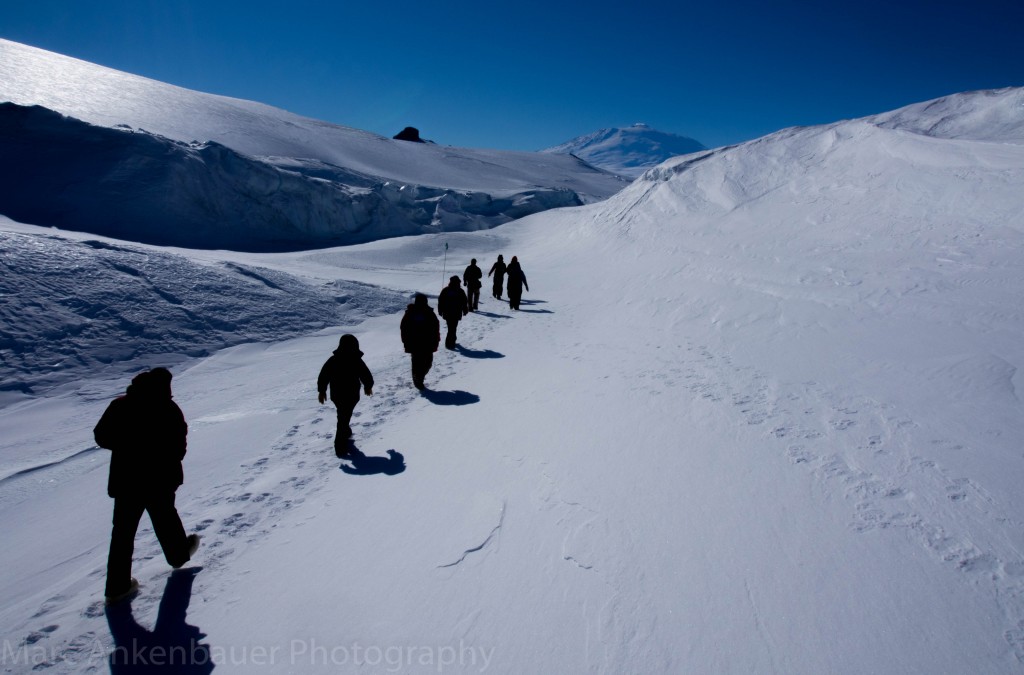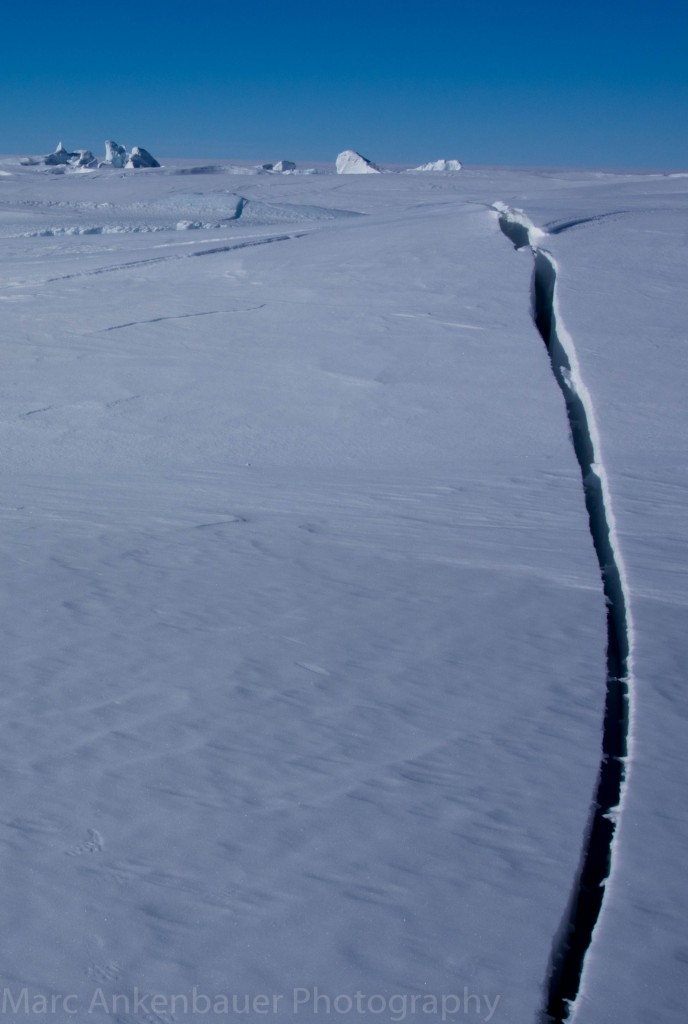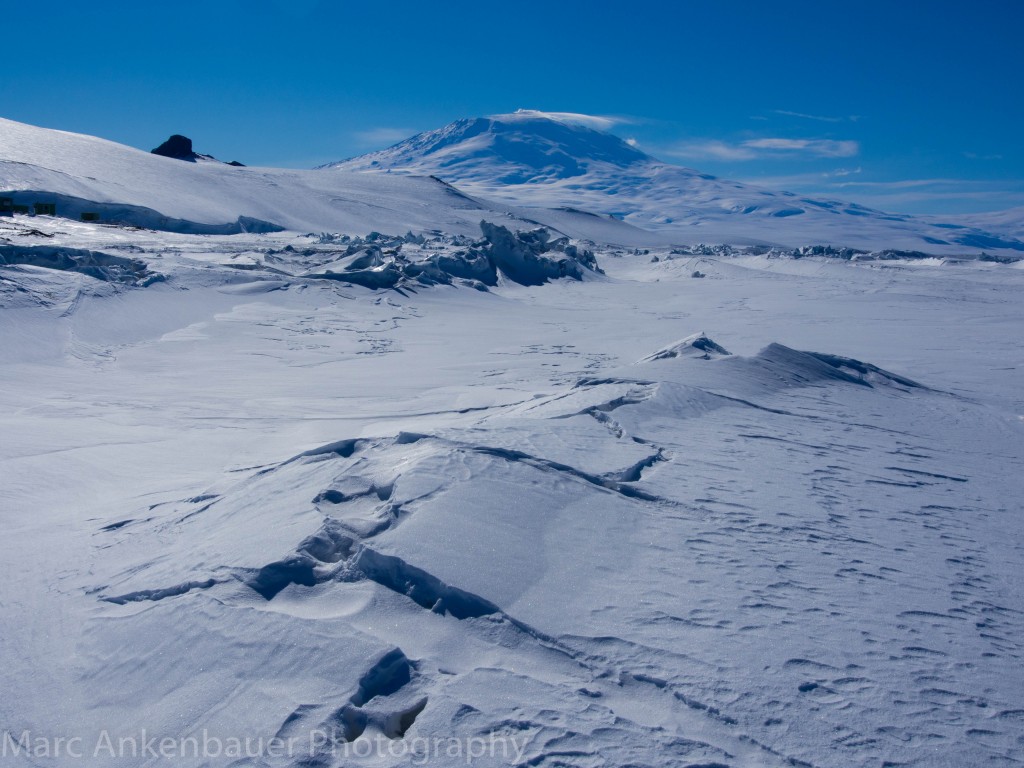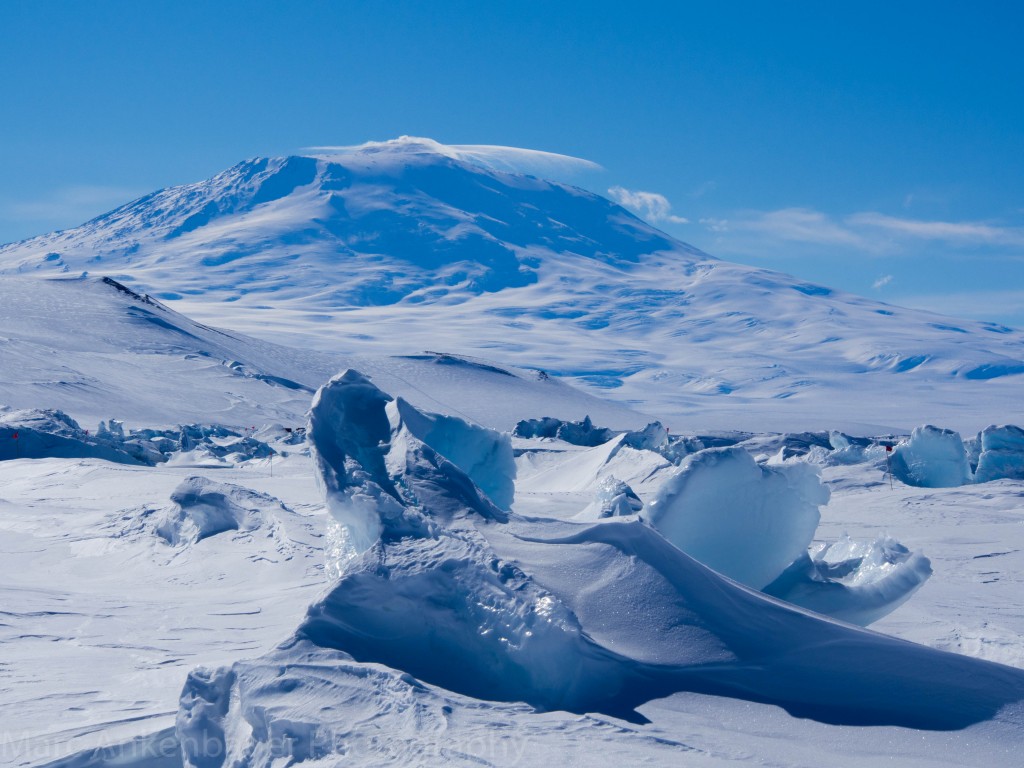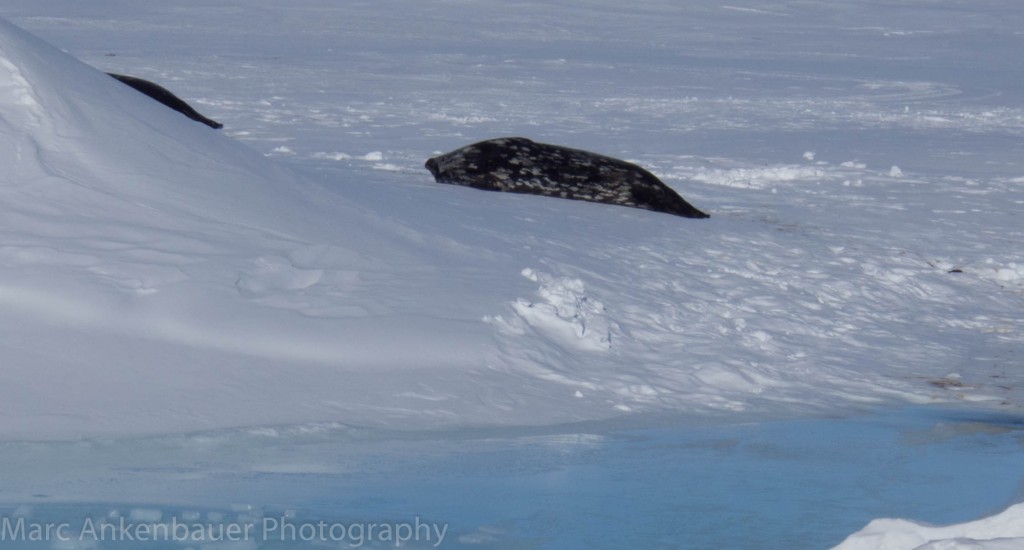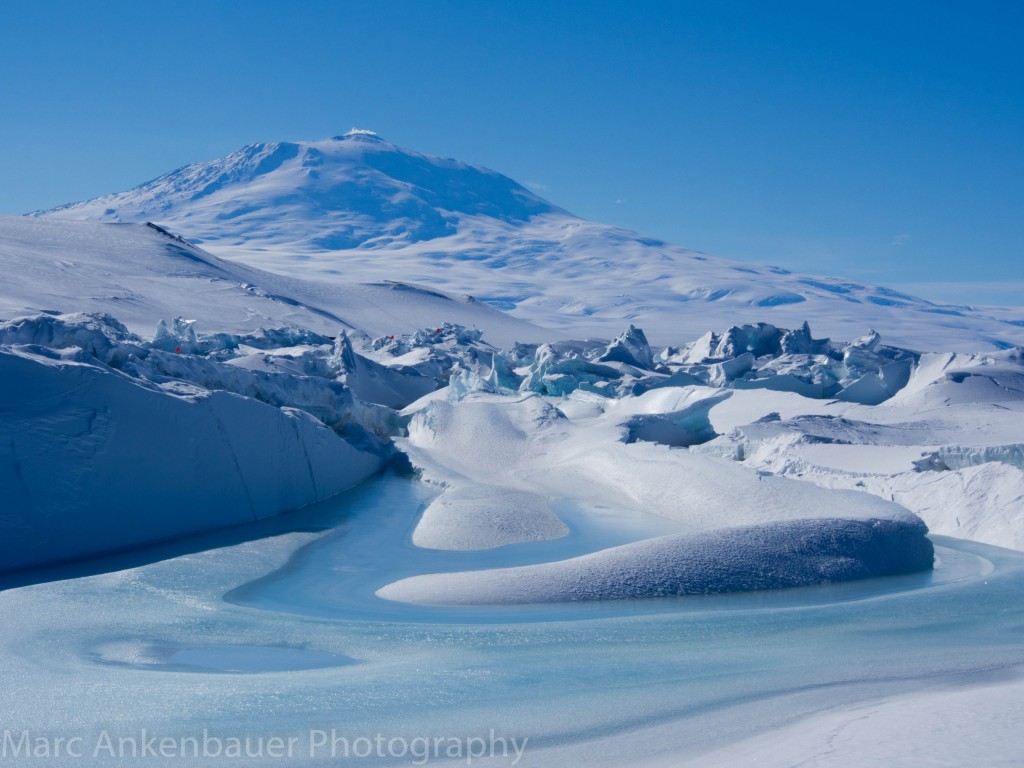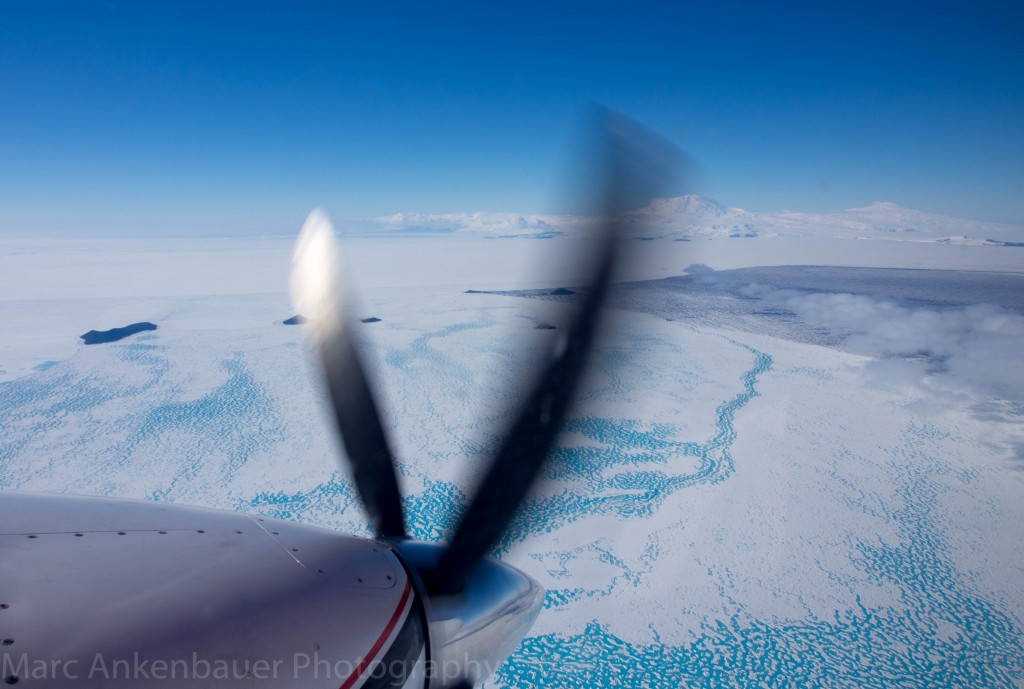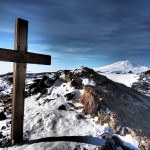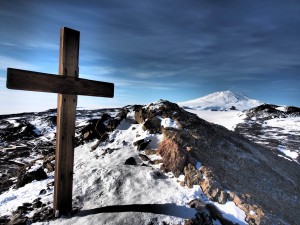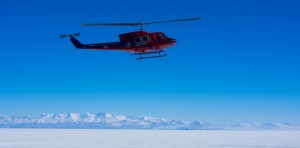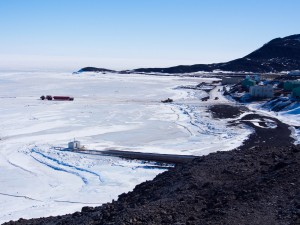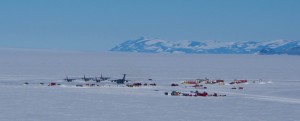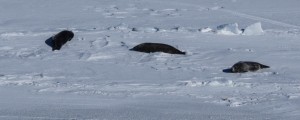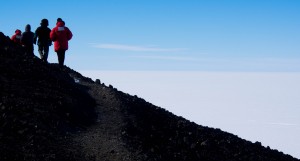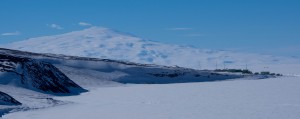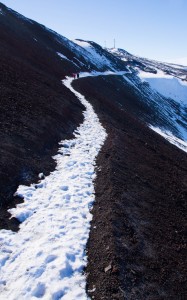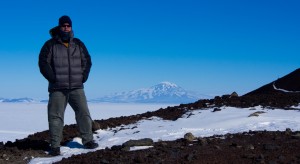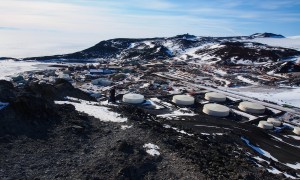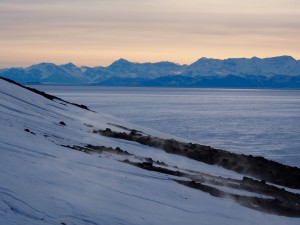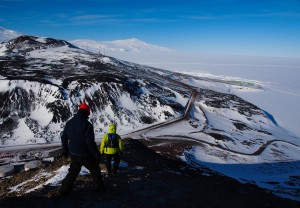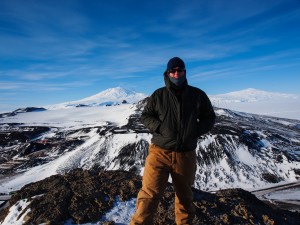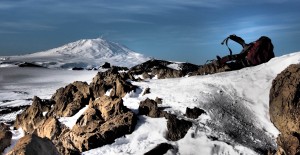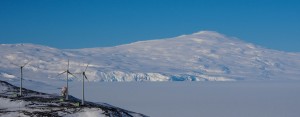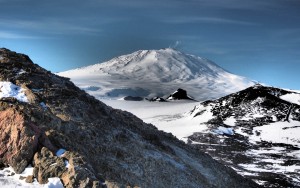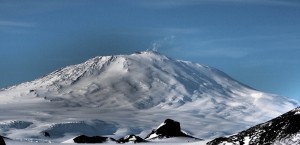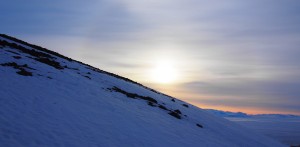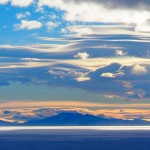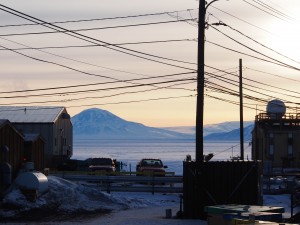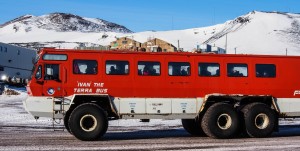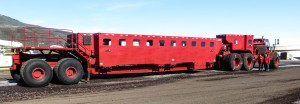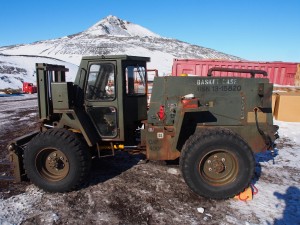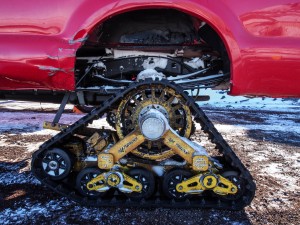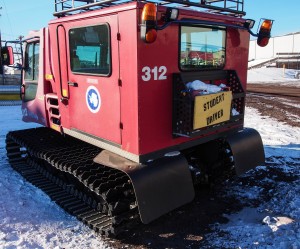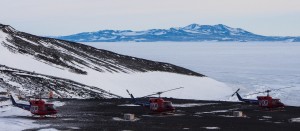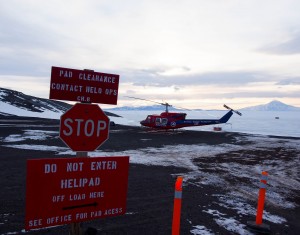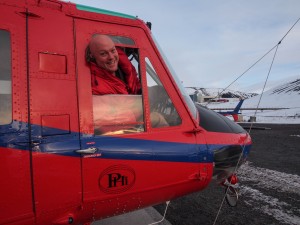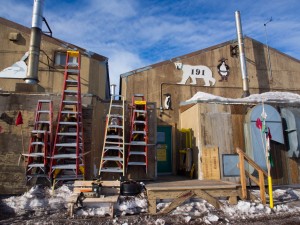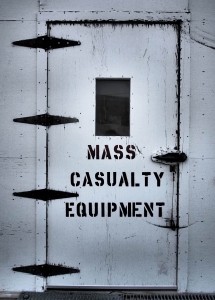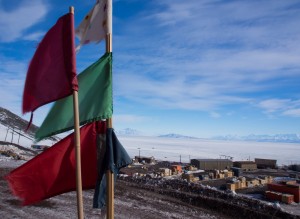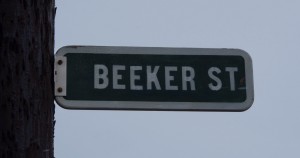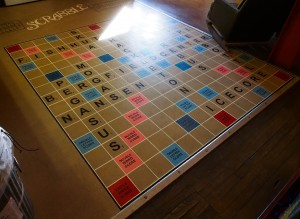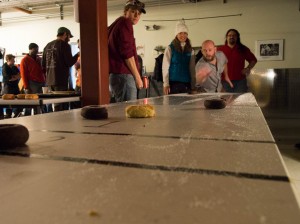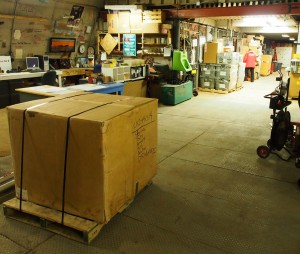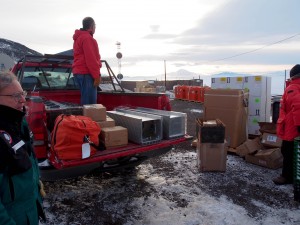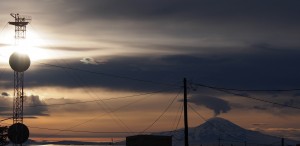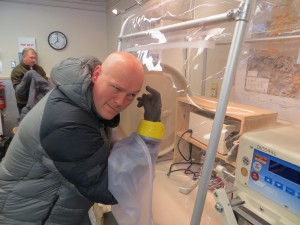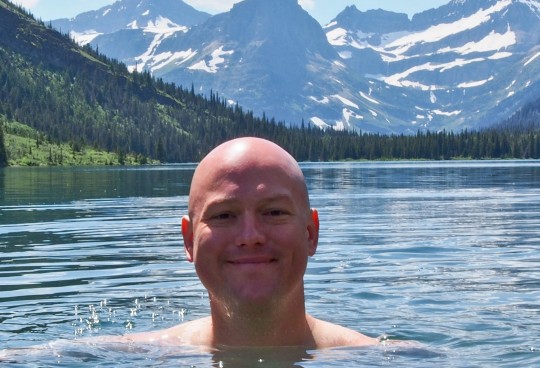Note: I wrote this blog post while sitting at the South Pole in December of 2012, but it’s being posted in January 2014. Sorry for the wait. 🙂
The Ross Sea is the southern most liquid water on planet earth.
It carves an enormous gap in what is a mostly round Antarctica.
McMurdo Station is situated at the edge of where the Ross Ice Shelf meets the “open” sea.
An Ice Shelf is a permanent sheet of ice which is still connected to the glaciers on land.
Photo: John Weller
The Ross Ice Shelf just happens to be the largest in the world.
It is 2000 feet thick and covers a portion of the Ross Sea that is the size of France.
Photo: Google Images
When I first got to Antarctica, the sea ice looked the same as the permanent ice shelf.
An almost unending expanse of flat white ice still frozen together after a long winter.
As the Antarctic summer progresses the sea ice will get thinner.
By the end it will become billions of pieces of flat ice floating on top of the world’s greatest aquatic wildlife sanctuary.
Photo: John Weller
Below the Ross Sea ice is a world of biodiversity that has no comparison on earth.
Photo: John Weller
Ancient oceans, before man, may have been similar…
But no other ocean ecosystem on earth is this pristine any longer.
The last 50 years of industrial fishing and environmental degradation have left the Ross Sea the “Last Ocean”.
Photo: John Weller
In 1959 the Antarctica Treaty set the continent aside for peaceful scientific purposes only.
No one country owns Antarctica and the international scientific community abides by the treaty.
Photo: John Weller
Unfortunately, there is no such law governing the world’s oceans.
Photo: John Weller
The most dynamic part of the Antarctic ecosystem is the ocean surrounding it.
You can protect Antarctica all day long, but the fish are in the water…
Photo: John Weller
Ross Sea is filled with multiple species of seals, penguins, whales, birds, fish and every other creature that loves the undisturbed cold depths.
Photo: John Weller
The Tooth Fish, which is known by its more marketable name of Chilean Sea Bass is drawing industrial fishing operations from around the world to the Ross Sea.
They are a keystone component in the food web of Southern Oceans and in many respects are the glue that holds it all together.
Photo: John Weller
Most of the world’s oceans are already depleted to the extent that they can’t support the demand.
So, it’s finally time to tap into the last and most remote corner of the ocean world.
Photo: John Weller
There is a large scale attempt to stop the exploitation of this region.
If you are interested check out the www.lastocean.org or the Last Ocean Documentary Trailer by Peter Young.
I’m certain that l will never be given the opportunity to scuba dive in the Ross sea to witness this concert of wildlife for myself.
But just the idea that something like this still exists gives me faith that we haven’t lost it all yet.
Photo: John Weller
When I return from the South Pole and the deep field stations of East Antarctica I hope to have the time to witness the more accessible, melted version of the Ross Sea.
This is the most “melted out” I ever saw it by the way…
Off the coast from the New Zealand Scott Base, there are pressure ridges that show the first kink in the ice.
I was able to explore and photograph these odd ice spires and wrinkles.
My coworkers and I were sent on a tour as a last outing before we head out to the remote field camps.
Daily the cracks and heaves change as the melting continues.
A guide was essential to lead us safely through the labyrinth of contorted ice.
Pressure ridges are created where the ice shelf and the sea ice meet.
It’s much like plate tectonics.
Mountains are created when one continental plate smashes into or ramps up onto another continental plate.
A winter of thick sea ice heaves and crumbles when the ocean pushes it against the much larger Ross Ice Shelf.
It creates bizarre spires, rolls, arches and sinks.
It’s like a Dr. Seuss book of ice sculpture.
Seals and penguins are sometimes seen tucked into the folds of the pressure ridges.
I was lucky enough to see three Weddell Seals where I went the other day.
They find their way through the new cracks in the ice and flop themselves on to the surface.
They lounge a while, take in in the scene, and then drop back into the depths below the ice.
On land they are a big sedentary blob.
I’ve never seen one actually do-anything.
But in the water they are graceful as a soaring bird.
Poetry in motion!
Photo: John Weller
It’s always exilerating to see wildlife in their natural surroundings.
And then you make this the surroundings!
Calmly lounging beneath the hulking, steaming expanse of Mt. Erebus, the southern most active volcano on earth.
In my life I have been lucky to witness some seriously amazing landscapes.
It’s kinda my bag.
You know?
But this place is without comparison!
I hope you are enjoying it with me.
If you have any questions or comments please drop me a line on the comment forms below.
*I would like to thank nature photographer John Weller. He is the image guru of the Last Ocean Documentary. I hope he would be accepting of the use of some his photos for the greater good. Obviously, I don’t have any personal photographs of these amazing underwater places.
I figured that I would borrow some of his masterful images to spread the word and make the message more visually compelling. To help me justify my usage this man’s amazing product, please check out Last Ocean Short Film on Youtube, and help spread the Last Ocean mission.
